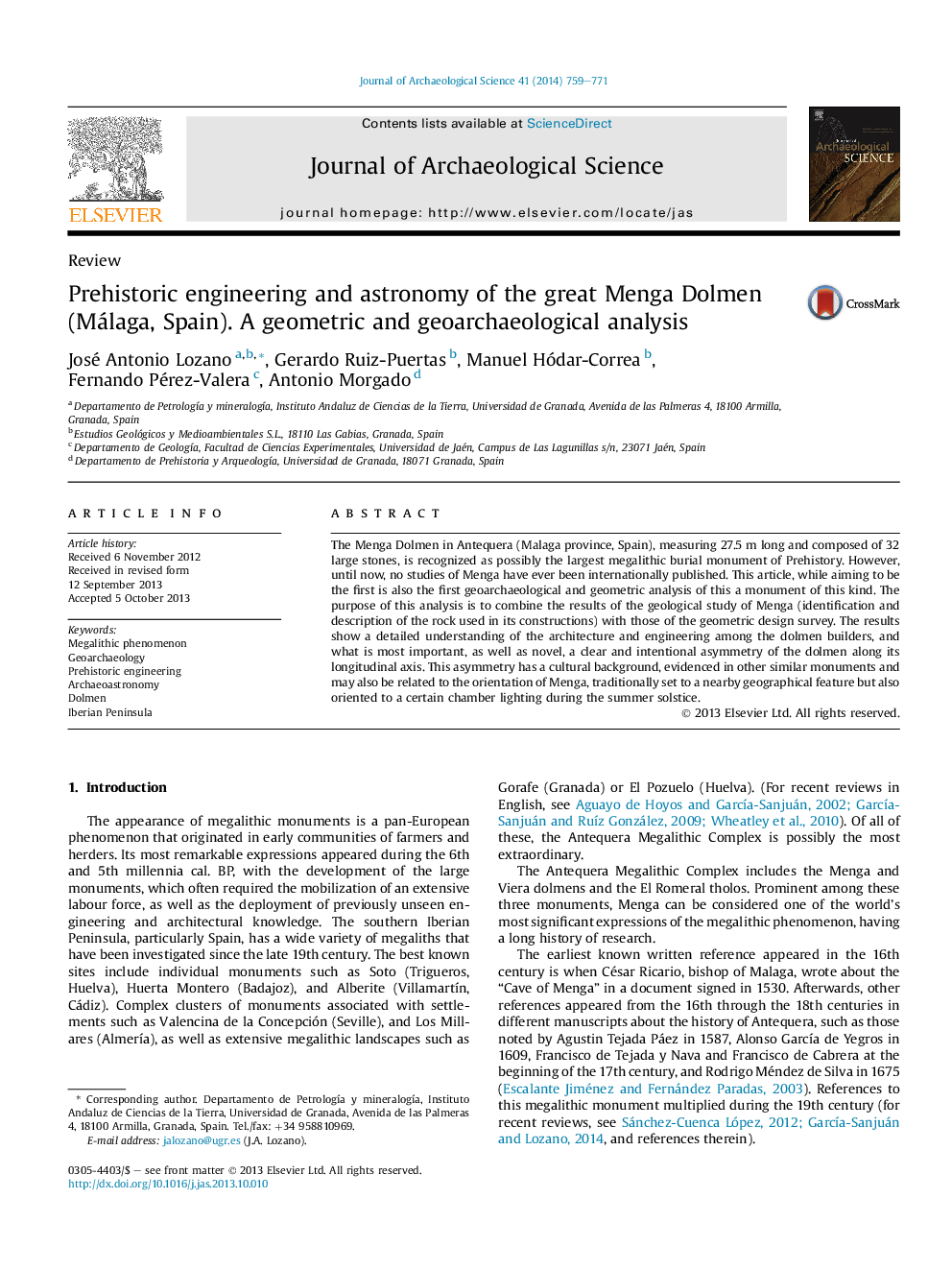| کد مقاله | کد نشریه | سال انتشار | مقاله انگلیسی | نسخه تمام متن |
|---|---|---|---|---|
| 7444153 | 1483919 | 2014 | 13 صفحه PDF | دانلود رایگان |
عنوان انگلیسی مقاله ISI
Prehistoric engineering and astronomy of the great Menga Dolmen (Málaga, Spain). A geometric and geoarchaeological analysis
دانلود مقاله + سفارش ترجمه
دانلود مقاله ISI انگلیسی
رایگان برای ایرانیان
موضوعات مرتبط
مهندسی و علوم پایه
مهندسی مواد
دانش مواد (عمومی)
پیش نمایش صفحه اول مقاله

چکیده انگلیسی
The Menga Dolmen in Antequera (Malaga province, Spain), measuring 27.5Â m long and composed of 32 large stones, is recognized as possibly the largest megalithic burial monument of Prehistory. However, until now, no studies of Menga have ever been internationally published. This article, while aiming to be the first is also the first geoarchaeological and geometric analysis of this a monument of this kind. The purpose of this analysis is to combine the results of the geological study of Menga (identification and description of the rock used in its constructions) with those of the geometric design survey. The results show a detailed understanding of the architecture and engineering among the dolmen builders, and what is most important, as well as novel, a clear and intentional asymmetry of the dolmen along its longitudinal axis. This asymmetry has a cultural background, evidenced in other similar monuments and may also be related to the orientation of Menga, traditionally set to a nearby geographical feature but also oriented to a certain chamber lighting during the summer solstice.
ناشر
Database: Elsevier - ScienceDirect (ساینس دایرکت)
Journal: Journal of Archaeological Science - Volume 41, January 2014, Pages 759-771
Journal: Journal of Archaeological Science - Volume 41, January 2014, Pages 759-771
نویسندگان
José Antonio Lozano, Gerardo Ruiz-Puertas, Manuel Hódar-Correa, Fernando Pérez-Valera, Antonio Morgado,